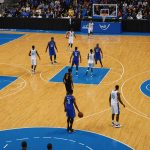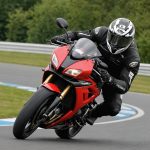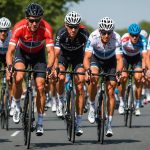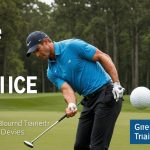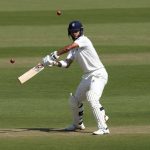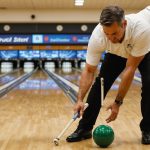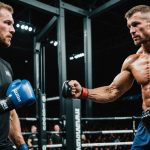Advanced Jumping Techniques
Mastering jumping techniques requires understanding the fundamental role of form and balance. Proper form, crucial in equestrian jumping methods, ensures both safety and effectiveness when approaching jumps. Maintaining balance throughout the approach allows riders to communicate clearly with their horses, fostering a harmonious ride. This balance acts as a foundation on which advanced equestrian skills are built.
When considering take-off, maximizing lift involves both horse and rider acting in sync. Riders need to focus on timing and posture to leverage the horse’s natural rhythm. Effective take-off is achieved by maintaining a compact yet flexible posture, thus allowing for smooth energy transfer from horse to rider.
Topic to read : Elevate your cricket game: unleashing ultimate fielding agility with expert strategies
The landing phase is where many riders struggle. It’s essential to absorb impact by slightly bending the knees and maintaining a forward gaze. This technique not only enhances stability but also prepares both horse and rider for the next jump.
Advanced maneuvers involve adapting techniques to various types of jumps. For instance, oxers require a broader trajectory, often demanding additional leg support to ensure clearance. Whereas, when approaching verticals, control and precision take precedence, as they need distinct approaches and take-offs.
In parallel : Enhancing endurance: proven training techniques for cyclists tackling multi-stage competitions
Such techniques elevate a rider’s capability, turning basic skills into advanced equestrian skills to confidently tackle diverse jumping challenges.
Effective Training Exercises
Creating a robust training regimen for equestrian athletes involves various training exercises designed to develop specific skills and build confidence in both horse and rider. A structured warm-up is vital for preparing for upcoming physical demands. These warm-ups should include light trot work to increase circulation and mobility drills to loosen joints, ensuring optimum readiness.
Equestrian Drills
Once warmed up, specific equestrian drills can significantly enhance jumping technique. For instance, exercises that involve changing the rein or practicing precise turns on the track help refine jump training methods. These exercises encourage both horse and rider to focus, fostering better control and balance during jumps.
Jump Training Methods
Jumping confidence and proficiency can be further developed through thoughtful jump training methods. Incorporating grids and gymnastic lines within the training enriches this process.
- Gymnastics: Sequential obstacles placed at set distances to aid in technique refinement.
- Grid Work: Linear sequences of fences, which improve rhythm and timing.
These systematic practices help in solidifying the core concepts of jumping by promoting consistency and precision. By regularly incorporating such drills into the training routine, riders can significantly boost their competitive edge and nurture a harmonious partnership with their horse.
Mental Preparation Strategies
Enhancing your mental focus is vital for any athlete, but especially in equestrian sports where the bond between rider and horse is precious. Learning performance psychology can significantly improve your performance by honing your mindset.
Visualization techniques are an effective tool to conquer performance anxiety. Envisioning yourself successfully completing your routine fosters confidence and primes your mind for action. This approach can reduce nerves by creating a sense of familiarity with the event, allowing it to become second nature.
Goal setting plays a crucial role in enhancing performance. Setting specific, achievable targets can offer a clear path toward improvement while maintaining motivation. Remember to break larger goals into smaller ones to enable a sense of accomplishment as each milestone is achieved, reinforcing positive behavior patterns.
Developing a pre-competition routine is essential to maintaining optimal focus. Establishing a consistent routine can help you transition from daily diversions to a performance-ready state. Consider incorporating elements such as mindfulness exercises, focused breathing, and mental rehearsals to support a balanced equestrian mindset.
For equestrians, merging performance psychology with physical preparation ensures a holistic approach to competition readiness, ultimately enhancing both focus and composure.
Common Mistakes and How to Avoid Them
In the equestrian world, identifying and correcting common jumping errors significantly impacts performance improvement. One frequent mistake involves not maintaining consistency in posture during jumps. Riders often lose their centre, causing imbalance and equestrian pitfalls. Ensuring proper alignment by focusing on core strength and balance can mitigate such issues.
Another prevalent pitfall is miscommunication between the horse and rider. Misinterpretations can lead to poor jumps or refusals. Solution? Develop a reliable rider-horse bond by investing time in groundwork exercises, which enhance trust and understanding.
The body position during take-off is also critical. Riders have a tendency to lean too far forward, this disrupts the horse’s momentum and can lead to knocked poles or falls. To counteract this, practice maintaining a slightly upright posture till the horse’s front feet leave the ground.
Additionally, horses can encounter issues such as rushing to fences or eliciting overenthusiasm. To avoid this, incorporate cavalettis into warm-ups, promoting self-control and rhythm. Consistent training routines focus on building mutual confidence.
Performance improvement relies heavily on understanding and addressing these common mistakes. By recognising these challenges and employing targeted techniques, riders can enhance uniformity in performance, resulting in better arena outcomes.
Insights from Equestrian Professionals
Gleaning insights from eminent equestrian coaches and professionals can be transformative for riders at any level. Expert advice from those who have excelled offers actionable strategies for success. Interviews with successful equestrians unveil the discipline and dedication behind their training regimens. For instance, many elite riders emphasize the importance of a structured schedule, ensuring both horse and rider are prepared for each challenge.
Renowned coaches often share pro tips on refining technique and building resilience. One such piece of advice is to maintain balance between physical prowess and mental fortitude. According to top equestrian coaches, understanding the unique partnership between horse and rider is crucial. This synergy can be enhanced through consistent practice and open communication, creating a trusted bond essential for peak performance.
Beyond personal training, the significance of mentorship in equestrian sports cannot be overstated. Professional mentorship provides a vital foundation, paving the way for skill advancement. Experienced mentors offer equestrian coaching insights, guiding up-and-coming riders by identifying areas for improvement and celebrating strengths. They cultivate a learning environment that is both supportive and challenging.
Incorporating these insights and adopting a learner’s mindset can propel equestrians towards mastery, allowing them to reach new heights in their riding careers.
Practical Advice for Horse and Rider
Navigating the complexities of equestrian partnerships requires focusing on trust and understanding between horse and rider. Building effective communication forms the bedrock of this relationship. Horses, being intuitive animals, respond well to consistent and gentle cues. Visual signals, voice commands, and physical touches can serve as communication tools, helping articulate the rider’s intentions clearly.
Understanding your horse’s strengths and weaknesses enhances training effectiveness. It involves assessing factors like temperament, agility, and responsiveness. Recognising these attributes guides riders in tailoring their approaches, ensuring tasks align with the horse’s capabilities. For instance, a horse with high stamina but less agility might excel in endurance tasks but need extra support in showjumping.
Training methods that foster a strong horse-rider bond often include positive reinforcement and patience. Emphasizing repetition and rewarding small achievements helps reinforce lessons. This approach not only enhances learning but also deepens the emotional connection. Moreover, incorporating variety in routines prevents monotony, stimulating both horse and rider mentally and physically.
Ultimately, enriching horse rider dynamics through deliberate practices not only elevates performance but also nurtures mutual respect and affection. By dedicating time and energy to understanding and connecting with their equine partners, riders form lasting and rewarding bonds.
Multimedia Learning Resources
In today’s digital age, equestrian videos serve as essential tools for mastering riding techniques. These visual aids break down complex maneuvers, making them more understandable for both beginners and experienced riders. Videos allow learners to observe and emulate movements, noticing subtle body cues and equine responses.
Thriving websites and platforms provide a wealth of step-by-step guides, offering comprehensive insights into various equestrian skills. Websites like YouTube host channels dedicated to riding tips, eventing, jumping, and dressage, while specialised apps deliver tutorials directly to smartphones. These resources facilitate learning at a personalized pace, allowing riders to pause, rewind, and rewatch until they are confident with the steps.
Additionally, integrating learning aids such as equestrian videos with modern technology can significantly bolster training methods. Utilising devices like tablets or smart televisions in practice arenas offers a practical way to reference guides on the go. By leveraging these technologies, riders can better visualize and implement new concepts.
For those seeking structured guidance, online platforms offer courses that often include step-by-step guides supplemented by expert feedback. Engaging in such multimedia resources can dramatically enhance both understanding and skill execution, providing an advantageous edge in equestrian pursuits.





